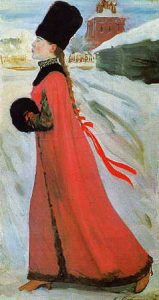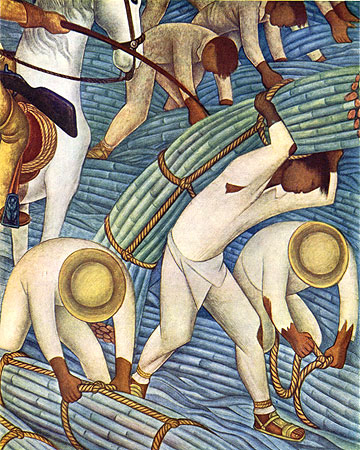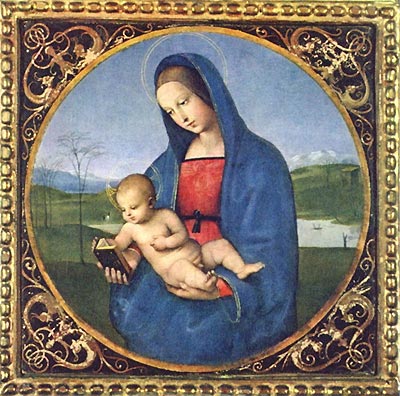Andrei Ryabushkin – historical painter
 Russian art of the late XIX – early XX century is rich in bright individuals. But among them Ryabushkin remains a master who created a special artistic world. His originality was not loud and noisy.
Russian art of the late XIX – early XX century is rich in bright individuals. But among them Ryabushkin remains a master who created a special artistic world. His originality was not loud and noisy.
Mikhail Nesterov, who knew the artist well, wrote that “a talented, quiet, quiet Andrei Petrovich Ryabushkin … was withdrawn, as if carrying some secret in himself. And only sometimes the curtain of the inmost broke through, and before us flashed strong passions hidden in it. ” In life, he did not receive widespread fame, and after his early death was almost forgotten. Today it is hard to believe in it – our idea of the art of that time without Ryabushkin would be so impoverished.
He is a historical painter, whose main theme is Russia of the 17th century. Could there be something new to be said after the great Surikov? Under the influence of his paintings were many artists. But Ryabushkin went his own way. One of his best paintings is “Russian women of the XVII century in the church”. There is no dramatic action, conflict, without which Surikov’s paintings are unthinkable. Before us is a leisurely course of life. The household side is recreated not for its own sake, but in the name of poetry, which is here concluded. The painter carefully studied the costumes, the utensils of a bygone era, but this did not make his style dry and protocol. Ryabushkin literally does not copy an ancient ornament, ancient frescoes, but freely varies them. On the other hand, he does not demonstrate his own mastery, but, on the contrary, modestly retreats to the side, letting him feel the beauty of the depicted world, carefully presenting it to the viewer. In the image that he creates, there is reality and fantasy, historical truth and fiction. Impeccable artistic tact, taste and great sincerity helped the painter to avoid the slightest nuance of falsehood. Looking at the canvas, it is impossible not to feel that under the arches of the temple something important is being accomplished. The master subtly felt the spirit of the time, he was deeply worried about how to convey the fragrance of the past.
Ryabushkin among the first began to perceive history through the prism of art of the seventeenth century. The colorful, decorative paintings are associated with the elegance of Yaroslavl paintings, the decoration of churches of that era, it is a real celebration of color. The beauty of the master is a sign of sincere integrity and sincerity. In the harmony of colors, expressively constructed composition, whimsical rhythms visible original master.
Biography Ryabushkin not rich in events. He was born on October 29, 1861 in the village of Borisoglebsk near Voronezh. His father and elder brother were icon painters, and in childhood the boy helped them. His life probably would have followed this channel if it were not for the meeting with artist A. X. Preobrazhensky. When the young man was orphaned, he took part in his fate, took him to Moscow.
Since 1875, Ryabushkin has been engaged in the Moscow School of Painting, Sculpture and Architecture under V. G. Perov and I. M. Pryanishnikov, deserves their favor. In 1880, P. M. Tretyakov acquired his small sketch “The Peasant Wedding in the Tambov Gubernia”. The first success inspired, and soon Ryabushkin leaves school and enters the Academy of Arts. In this step, there was nothing surprising. It was uncharacteristic that Ryabushkin, unlike many of his peers, came to the end there, taking part in all the competitions that were supposed to take place. At the same time, it remained alien to the spirit of the routine that prevailed then at the academy — the reform that brought the greatest peredvizhniki there was not yet carried out. Apparently, Ryabushkin knew well what he wanted, and did not neglect those elements of skill that the school could give him. He worked on the painting in his own way, not forcing the pose models for hours, but making quick pencil sketches for the purpose of writing from memory. In 1890, while working on the Golgotha competition program, Ryabushkin defiantly violated the rules: not satisfied with the old sketch, which was approved by the authorities, he rewrote everything anew. As a result, he lost his medal, but he did not change himself.
Instead of an academic award, Ryabushkin received funds for a two-year stay abroad – personally from the president of the academy. But he didn’t want to go there, but went to travel around Russia, visiting Rostov, Yaroslavl, Pskov, Novgorod, Kiev, in his homeland. One can imagine what his impressions were of homespun clothes, carved huts, embroideries, old songs, which, by the way, he collected. As the biographer wrote, he “lived and breathed only with his own, national, Russian”.
In 1891, the master wrote two versions of the painting “Waiting for the newlyweds from the crown in the Novgorod province”. The moment itself is characteristic: not an event, but an expectation. A rite is performed in the church, the young are waited, and this is an established ritual, it does not bore you, it cannot bore you.



